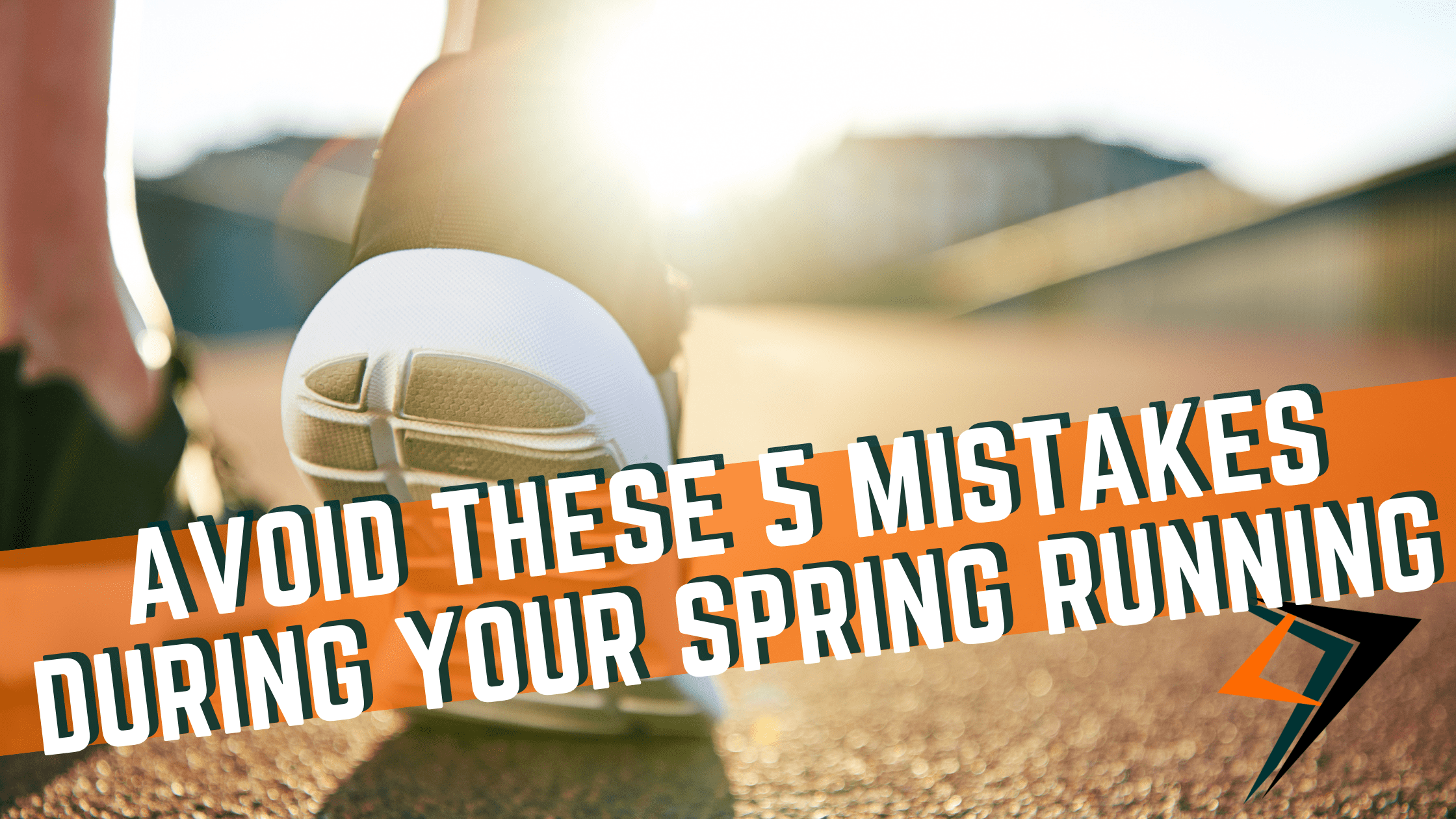
Eager to get back into running? Ready to start training for your next 5k, 10k, or marathon? Looking to hit a PR this year? Us too! So, avoid these 5 common running mistakes this Spring!
1. RUNNING MISTAKES: OVERLY AGGRESSIVE MILEAGE INCREASES
There’s a reason they call it runner’s high. Becoming addicted to running every or most day is found amongst many runners. Ramping up mileage too fast is the most common of running mistakes we see and can lead to injures like Achilles tendonitis or hip labral tears. These injuries can halt a runner’s training and performance. Avoid a setback in the middle of the season by ensuring adequate warm-ups and cooldowns.
Gradual overload is key. Progress the intensity and complexity of your running to build up your running capacity. Finding a run-walk program may be exactly what you need to build resiliency.
2. AVOID ONLY RUNNING STRATEGIES
Too many runners leave major performance gains on the table and suffer from far too many injuries by not strength training at a level that supports the demands of their running. For those performing strength exercises, we often see the movements performed at intensities too low to help improve their fitness. Avoid this common Spring running mistake by implementing appropriate strength training multiple times per week.
For example, you’d never follow a training program that maxes out at a 2-mile run if you are trying to complete a marathon. The stimulus is too low to get you to your goals. But what about strength exercises that aren’t significantly challenging? They also won’t help your performance or your goals. Check out this 4-week strength training plan to get you on track towards your goals!
Important to strength training is also varying your running. Varying your running paths, mileage, trails, and pace allow you to adapt, accommodate and further bulletproof your running. One way is to integrate “hard” and “easy” run days to better promote recovery and prolong your injury-free running.
3. RUNNING THROUGH AN OLD INJURY
Have you gotten “back to baseline” from an old injury? Do you find that around the same time every year, you’re dealing with the same old shin splint injury you remember all too well? Are you constantly returning to those former rehab exercises or stretches…just to get you “well enough” to get through the remainder of the season?
We call this “getting back to baseline”. Maybe you’ve been through rehab where you’ve just been treated for your symptoms rather than your performance. At Onward Atlanta, we focus on getting you out of pain quickly, and then flipping our attention to getting you “better than baseline”. Your past injuries should stay in the past.
Find a performance physical therapist who focuses on getting you better than your “pre-injury level” because that level is where you got hurt in the first place. The passion to get you to your next best level should be a shared effort between you and your physio. With the right people in your corner, it is possible to keep past injuries in the past and prevent new, common running injuries from arising.
4. RUNNING MISTAKES: SHOES
I often am asked, “what is the best running shoe?” And the answer is the one that is most comfortable for you. Research backs this answer up. Time and time again, we’re being shown that wearing a comfortable running shoe is vital to reduce the risk of injury.
The next question I get is “when should I get a new pair of running shoes?”. Generally, shoes should be replaced around 300-500 miles. With advancing technology in footwear, this could change over time. But another bulletproof tip is to rotate between at least 2 pairs of running shoes.
Why? You take around 1,000 steps per mile — that’s a lot of repetition! Give yourself an advantage against repetitive stress injuries. The subtle changes in the shoes you rotate between allow you to optimize different biomechanical and muscular recruitment during your runs. By simply rotating your shoes this Spring, you can help avoid running mistakes and injury. This also prolongs the life of your shoes by breaking up the mileage accumulated per shoe.

5. FORM, FORM, FORM
Running is a contact sport. Every step is a force between yourself and the ground. If this force isn’t absorbed efficiently and properly, you may end up with running-related injuries. Having a running evaluation performed in real-time allows an expert to pinpoint your body’s movement capacity, cadence, and find the “leaks” in your performance. Avoid sidelining your running by finding out exactly what form improvements are specific to you. Find more out about our running evaluation services are provided at Onward Atlanta!
Recent Articles
Why Early Intervention Physical Therapy Accelerates Your Recovery

What to Expect at Your First Physical Therapy Session?

How to Choose a Physical Therapist

The Top 5 Misconceptions About Physical Therapy

The Complete Guide to Physical Therapy

